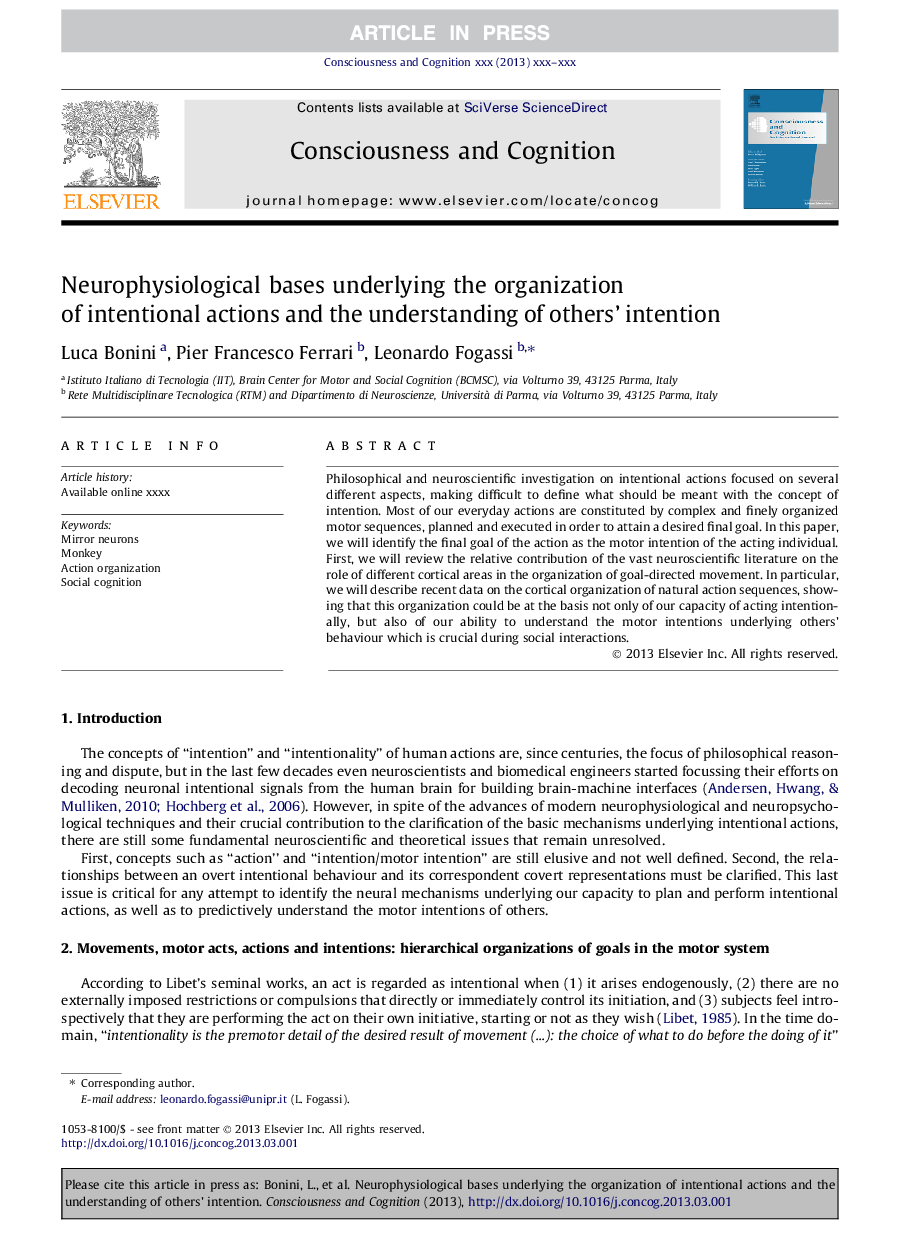| Article ID | Journal | Published Year | Pages | File Type |
|---|---|---|---|---|
| 10458491 | Consciousness and Cognition | 2013 | 10 Pages |
Abstract
Philosophical and neuroscientific investigation on intentional actions focused on several different aspects, making difficult to define what should be meant with the concept of intention. Most of our everyday actions are constituted by complex and finely organized motor sequences, planned and executed in order to attain a desired final goal. In this paper, we will identify the final goal of the action as the motor intention of the acting individual. First, we will review the relative contribution of the vast neuroscientific literature on the role of different cortical areas in the organization of goal-directed movement. In particular, we will describe recent data on the cortical organization of natural action sequences, showing that this organization could be at the basis not only of our capacity of acting intentionally, but also of our ability to understand the motor intentions underlying others' behaviour which is crucial during social interactions.
Keywords
Related Topics
Life Sciences
Neuroscience
Cognitive Neuroscience
Authors
Luca Bonini, Pier Francesco Ferrari, Leonardo Fogassi,
